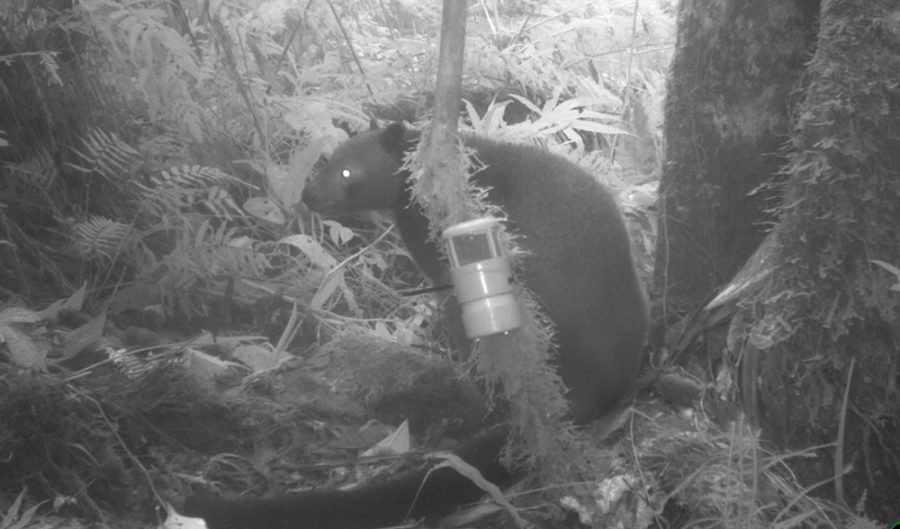New and rare species found in remote PNG

THREE NEW SPECIES of mammal have been discovered by an Australia-led expedition to the forests of Papua New Guinea.
The small wallaby, a large-eared mouse and shrew-like marsupial are yet to be fully examined, but they are thought to be new to science.
The expedition team included Jim Thomas from the Tenkile Conservation Alliance (TCA). He and his partner Jean were the Australian Geographic Society’s Conservationists of the Year in 2013 for their work on saving endangered tree kangaroos.
The team set up more than 26 camera traps in the remote mountain region of the Torricelli range late last year. Aside from photographs of the new species, the team also captured footage of a number of rare animals including the Tenkile tree kangaroo and the Weimang tree kangaroo, which combined are thought to only have about 600 individuals left in the world. They also saw the Hooded pitohui one of the world’s only poisonous bird species.

The wallaby thought to be a new species to science. (Credit: TCA/Deakin University)
Classifying new mammal species
Euan Ritchie an ecologist from Deakin University who is part of the team, told The Guardian Australia, “There are not that many truly small macropods, so it’s quite unusual. But we don’t know much about their diet or behaviour, or how many there are. This is all very much frontier stuff.”
A further expedition is needed to capture the species and take DNA samples in order to confirm the species are indeed new to science. The discoveries highlight the region’s biodiversity value. The area of PNG in which these species were discovered is poorly explored and there is likely to be many new species of plants and other animals.
In the past, the area has been largely undisturbed by mining or logging. Hunting of tree kangaroos by locals has also posed a threat to the animals, but guidance from the TCA has helped to restore their number by educating locals on sustainable practices.
There are currently roughly 50 villages signed up to the hunting moratorium, which has helped the numbers of Tenkile tree kangaroos grow from about 100 in 2003 to more than double that today.
New species highlight need for PNG conservation
The discovery of these new species will be used to encourage the Papua New Guinea government to protect the mountain range from any future mining or logging projects, as the researchers are wary that the current global extinction rates may result in a number of species being wiped out before they are even discovered.
TCA is aiming to produce a feature film on their work in PNG and to raise awareness of an international scale about what is happening in this remote area of the world, with the aim in securing more donations and ongoing support for their work.
To fund the production of this film head to the ‘Into the Jungle’ website. For more information about this and other TCA projects click here. More on Deakin University’s PNG work with TCA here.

